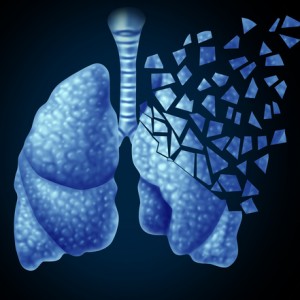 Gilead Sciences, a leader in therapeutic development for lung diseases, investigated the use of the Respiratory Domain of the Quality of Life Questionnaire-Bronchiectasis (QOL-B) in evaluating patients taking inhaled aztreonam (Cayston), a drug approved by the FDA to treat cystic fibrosis lung infections caused by Pseudomonas aeruginosa. The study, “Evaluation of the Quality of Life Questionnaire-Bronchiectasis (QOL-B) in Patients With Bronchiectasis,” completed in 2014.
Gilead Sciences, a leader in therapeutic development for lung diseases, investigated the use of the Respiratory Domain of the Quality of Life Questionnaire-Bronchiectasis (QOL-B) in evaluating patients taking inhaled aztreonam (Cayston), a drug approved by the FDA to treat cystic fibrosis lung infections caused by Pseudomonas aeruginosa. The study, “Evaluation of the Quality of Life Questionnaire-Bronchiectasis (QOL-B) in Patients With Bronchiectasis,” completed in 2014.
In total, 131 bronchiectasis patients were interested in the trial, and 89 of those screened patients enrolled and were treated with aztreonam. Treatment involved a 28-day course of inhaled aztreonam three times daily, as well as a two-week pre-study evaluation and a seven-week post-study evaluation. Of the original 89 participants, 82 completed treatment, and the remainder withdrew due to an adverse event, a physician decision, or a personal decision.
Gilead researchers were primarily interested in how the QOL-B would perform as an outcome measurement for bronchiectasis treatment. To test for reliability, the researchers gave the QOL-B to enrolled patients twice during the pre-study evaluation, when no changes or treatments were given. According to the study results, the QOL-B showed an Intraclass Correlation Coefficient (ICC) of 0.80, which is higher than the threshold of 0.70 that indicates strong reliability. In other words, when the patients were re-tested after initial testing, their answers changed minimally.
To test for QOL-B relevance in determining the health status of bronchiectasis patients, the researchers compared the measures of high-resolution computerised tomography (HRCT) scans, forced expiratory volume in one second (FEV1) percent predicted, six-minute walk test (6MWT), and St. George’s Respiratory Questionnaire (SGRQ) scores to the QOL-B. Using Pearson’s correlation coefficient, the coefficients were not in the moderate range of 0.3 to 0.5 for any of HRCT, FEV1% predicted, 6MWT, or SGRQ.
[adrotate group=”6″]
Finally, patients’ responses to treatment were determined through the Anchor-based Minimal Clinically Important Difference (MCID), which uses the Global Rating of Change Questionnaire (GRCQ), giving an indication of the Respiratory Domain of the QOL-B. The score, which ranges from -7 to +7, was an average of +2.9, indicating a minimal positive change as a result of treatment with inhaled azetreonam.
The results of this study preceded those of two phase 3 clinical trials, AIR-BX1 and AIR-BX2, which tested inhaled aztreonam in non-cystic fibrosis bronchiectasis. In “Aztreonam for Inhalation Solution in Patients with Non-Cystic Fibrosis Bronchiectasis (AIR-BX1 and AIR-BX2): Two Randomised Double-blind, Placebo-controlled Phase 3 Trials,” published in The Lancet Respiratory Medicine, the authors interpreted the study findings to show no significant clinical benefit of treatment when the QOL-B-Respiratory Symptoms scores were evaluated after four weeks.
“[There is] a continued need for placebo-controlled studies to establish the clinical benefit of inhaled antibiotics in patients with [bronchiectasis],” wrote the authors.
On the other hand, when cystic fibrosis patients received treatment with aztreonam and evaluated using the Cystic Fibrosis Questionnaire-Revised (CFQ-R), Gilead found a significant improvement in patient-reported symptoms when under treatment with aztreonam.

